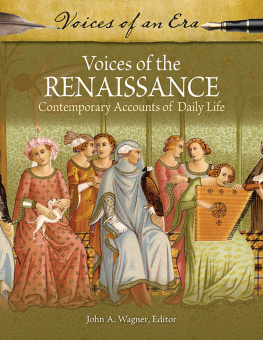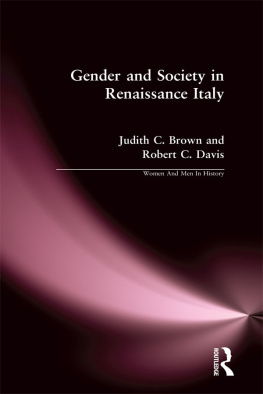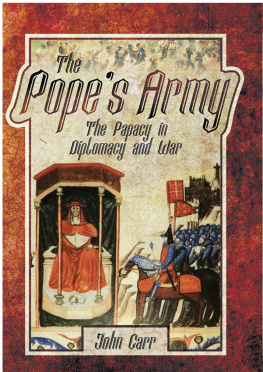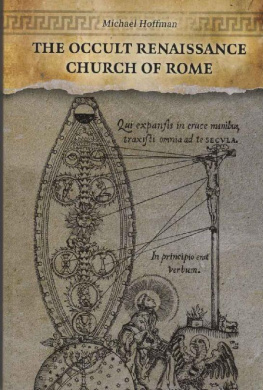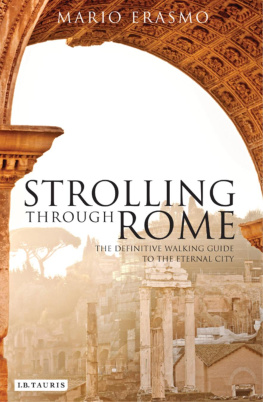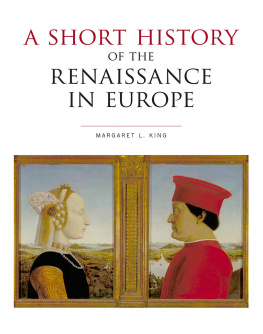Contents
Guide
Papal Bull
Singleton Center Books in Premodern Europe
LAWRENCE PRINCIPE, SERIES EDITOR
PAPAL BULL
PRINT, POLITICS, AND PROPAGANDA IN RENAISSANCE ROME
Margaret Meserve

Johns Hopkins University Press
Baltimore
2021 Johns Hopkins University Press
All rights reserved. Published 2021
Printed in the United States of America on acid-free paper
2 4 6 8 9 7 5 3 1
Johns Hopkins University Press
2715 North Charles Street
Baltimore, Maryland 21218-4363
www.press.jhu.edu
Library of Congress Cataloging-in-Publication Data
Names: Meserve, Margaret, author.
Title: Papal bull : print, politics, and propaganda in Renaissance Rome / Margaret Meserve.
Description: Baltimore : Johns Hopkins University Press, 2021. | Series:
Singleton Center books in premodern Europe | Includes bibliographical references and index.
Identifiers: LCCN 2020020200 | ISBN 9781421440446 (hardcover ; acid-free paper) | ISBN 9781421440453 (ebook)
Subjects: LCSH: PrintingItalyRomeHistoryOrigin and antecedents. | PrintingItalyRomeHistory16th century. | Book industries and tradePolitical aspectsItalyRomeHistoryTo 1500. | Book industries and tradePolitical aspectsItalyRomeHistory16th century. | Catholic ChurchPublishingItalyRomeHistoryTo 1500. |
Catholic ChurchPublishingItalyRomeHistory16th century. | Bulls, Papal.
Classification: LCC Z156.R7 M47 2021 | DDC 686.209456/32dc23
LC record available at https://lccn.loc.gov/2020020200
A catalog record for this book is available from the British Library.
Special discounts are available for bulk purchases of this book. For more information, please contact Special Sales at .
Johns Hopkins University Press uses environmentally friendly book materials, including recycled text paper that is composed of at least 30 percent post-consumer waste, whenever possible.
For Robert
ACKNOWLEDGMENTS
I am grateful to Lawrence Principe and the Charles Singleton Center for the Study of Premodern Europe at Johns Hopkins University for the invitation to deliver the Singleton Lectures in September 2016. Although this book covers more than the original lectures, the talks I gave at Hopkinson rituals of publication, inventions of tradition, and the branding of papal bulls in early modern Romeform the backbone of the present study. For their hospitality during my stay at Hopkins, I also want to thank Shane Butler, Stephen Campbell, Earle Havens, Eugenio Refini, and Joaneath Spicer.
Im also grateful for the support of many agencies and institutions. The American Academy in Rome, the National Endowment for the Humanities, and the American Council of Learned Societies provided time in Roman collections. A fellowship year at the Newberry Library in Chicago provided time to research and write. Three separate stays at Civitella Ranieri in Umbertide provided inspiration and solitude, and I am grateful to Dana Prescott and Diego Mencaroni for their kindness. I also thank the Institute for Scholarship in the Liberal Arts in the College of Arts and Letters at Notre Dame, the Notre Dame Center for Italian Studies, Notre Dame Research, and Notre Dames Rome Global Gateway for grants supporting research and travel. Thanks, too, to the American Philosophical Association for a travel grant.
Librarians and archivists facilitated visits to collections across Europe and North America, and I thank the staff at the British Library; the Biblioteca Apostolica Vaticana and Archivio Apostolico Vaticano; the Archivio di Stato, Biblioteca Casanatense, Biblioteca Corsiniana, and Biblioteca Nazionale in Rome; the Staatsarchiv Basel; the Pierpont Morgan Library and New York Public Library in New York City; the Newberry Library in Chicago; and the library at Bryn Mawr College. Librarians in Tbingen, Munich, Berlin, Novara, the Library of Congress, the Huntington, and the Boston Public Library answered queries from afar. At Notre Dame, David Gura, Julie Tanaka, and Tracy Bergstrom tracked down references, solved bibliographical problems, and located sources. Special thanks to Julia Schneider, librarian of Notre Dames Medieval Institute, for making the MI such a superb place to work. Katie Labor took photos at the Library of Congress. At Notre Dame, Erica Hastings and Mihow McKenny provided research assistance. Mousa Mohammadian organized a morass of images and permissions.
For expert advice, helpful references, and illuminating discussions, I also thank Monica Azzolini, Carrie Bene, the late Joe Buttigieg, Ted Cachey, Dorigen Caldwell, Mary Baine Campbell, Tom Cohen, Jon Coleman, Anthony DElia, Simon Ditchfield, Cristina Dondi, Patricia Edbury, Falk Eisermann, Margot Fassler, Catherine Fletcher, Irene Fosi, Danielle Fosler-Lussier, Paul Gehl, Ken Gouwens, Daniel Greene, Brad Gregory, Patrick Griffin, Julia Hairston, James Hankins, Dan Hobbins, Peter Holland, Alizah Holstein, Philippa Jackson, Kate Jansen, Katie Jarvis, Peter Jeffery, Claire Taylor Jones, Richard Kieckhefer, Jolle Rollo Koster, Tom Kselman, Claudia La Malfa, Susanne Meurer, Emily Michelson, Lisa Mignone, Steve Milner, Vernon Minor, Anna Modigliani, Christian Moevs, Emily OBrien, Anthony Ossa-Richardson, Alessandra Petrina, Andrew Pettegree, Manu Radakrishnan, Diana Robin, Massimo Rospocher, Ingrid Rowland, Paolo Sachet, Chris Schabel, Michaela Schedl, Michael Schreffler, Marcello Simonetta, Luka poljari, Francesca Trivellato, David Whitford, Lila Yawn, and Carla Zecher.
Certain friends lent special help at just the right moment. Annie Giletti shared anecdotes of legal process serving on a memorable day in the Musei Capitolini as we sat by the Lion Attacking a Horse. Mary Laven listened to talk about Loreto on several continents and sent photos of Loreto editions in Cambridge when catalogues failed. Sheila Pierce Ortona sent a photo of a Roman inscription when I badly needed it. Caroline Goodson read and offered encouragement on when I nearly lost faith in it. Heather Hyde Minor shook photographs loose from a Roman library. CJ Jones helped me think about German Dominicans and German bibliography. Sarah McKibben was ruthless with writing encouragement. Scott Meserve brought to my attention what became the closing anecdote of the book. Anthony Grafton came through with reassuring advice at a critical point. Jill Kraye continues to be the most exacting mentor and critic, whose standards inspire me daily.
Martin Davies, Mary Laven, Tom Noble, John van Engen, Tommy Goulding, Brian Krostenko, Marcello Simonetta, and Denis Robichaud read individual chapters and provided helpful critiques. Tom Burman, Brad Gregory, Dan Hobbins, Ted Cachey, and Tom Kselman read a draft of the entire manuscript and helped me think through revisions. Liza McCahill read both the proposal and the manuscript and offered generous suggestions for improvement. To her, and to the presss other, anonymous reviewer, I am immensely grateful. Of course, the faults and errors remain my own.
A portion of appeared in an earlier version in the article News from Negroponte, published in Renaissance Quarterly 59 (2006), which generously gave permission for me to use the material again here.
Two periods of institutional service bracketed this work and in different ways helped to shape it. I began my academic career at the Incunabula Short-Title Catalogue in the British Library. My colleagues Martin Davies, John Goldfinch, and Lotte Hellinga provided an education in the study of incunabula I could not have found anywhere else, and it was there I began thinking about how to integrate the study of bibliography with cultural and political history. This book is not a work of formal bibliography, by any means, but I could never have written it without the training and experience my colleagues at the BL provided.


